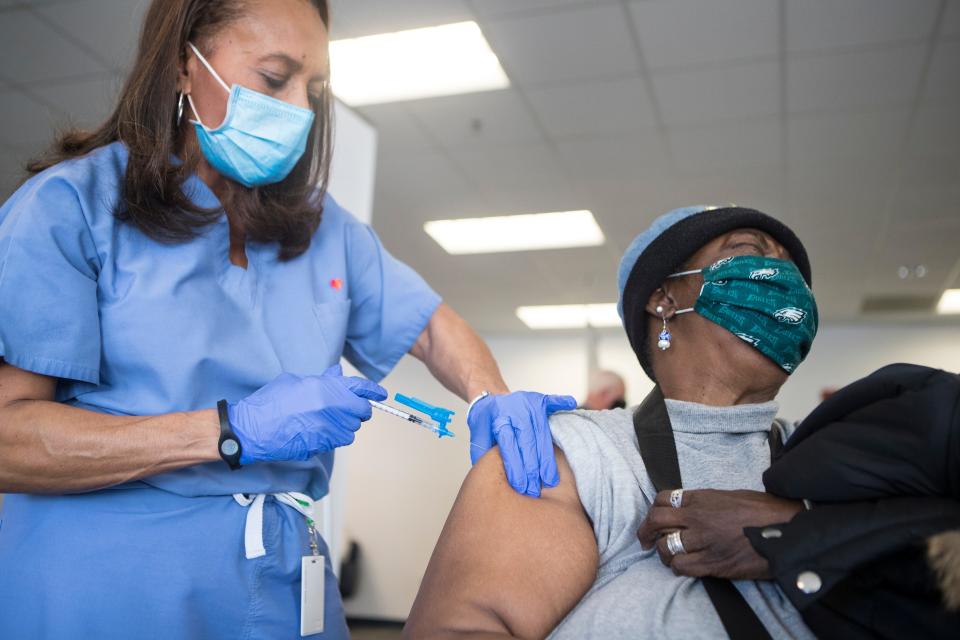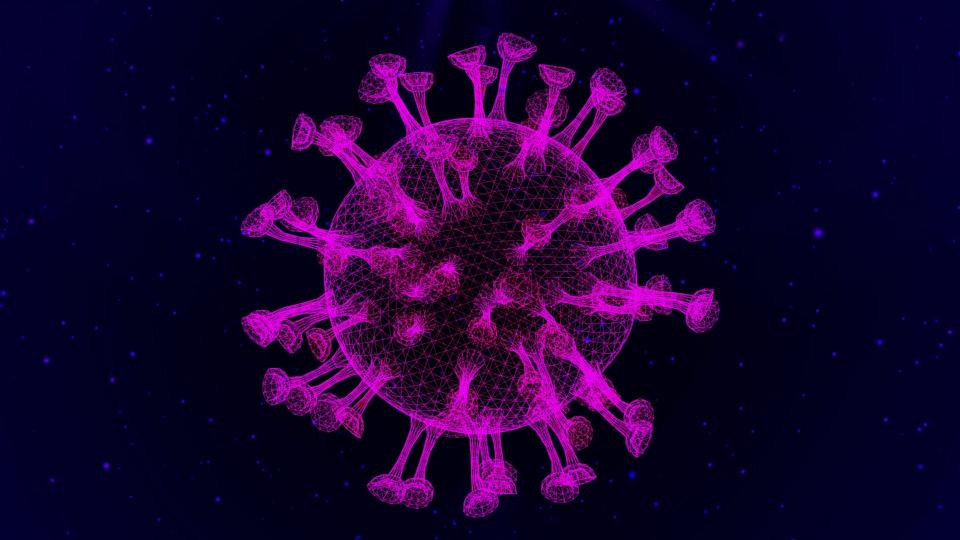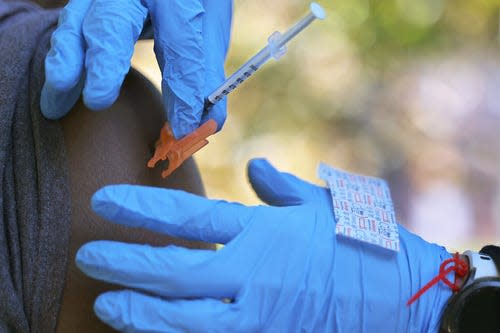FLiRT COVID-19 variant is on the rise. What to know, updated fall vaccine information
COVID-19 FLiRT variants continue circulating, accounting for small increases in new cases as hospitalizations and deaths follow suit.
What are the FLiRT COVID variants?

The Johns Hopkins Bloomberg School of Public Health reports that “FLiRT” is being used to describe “a whole family of different variants – including KP.2, JN1.7 and any other variants starting with KP or JN – that appear to have independently picked up the same set of mutations.”
They are all descendants of the JN.1 variant, which was the dominant variant in the U.S. for several months until FLiRT took over in late spring, according to Centers for Disease Control data.
Infection rates of FLiRT variants

By June 8, COVID sub-variant KP.3 became the dominant variant in the United States. Previously, KP.2 was the dominant variant after taking over from JN.1, which was the top circulating variant for several months.
Following KP.3, the other dominant variants currently topping infection rate charts are KP.2, LB.1 and KP.1.1, according to CDC Nowcast estimates.
While there is a slight increase in COVID cases, rates are not akin to those seen at the onset of the pandemic, and officials are still determining just how much of a jump infection rates might make this summer.
CDC data shows an increase in test positivity in recent weeks, and the Delaware Division of Public Health’s Coronavirus Data Dashboard shows an upward trend in positivity before and after a slight dip in new cases in the beginning of June.
Fall 2024 COVID vaccine update

In the spring, public health officials like the World Health Organization and the Federal Drug Administration were brainstorming the formula for updated vaccines that will be available in the coming fall, using recent infection rate information and research to determine the best virus strain to target. New variants can, and are likely to, pop up after a vaccine recommendation is made, but the overall goal of the vaccine is to match as many circulating variants as closely as possible.
In early June, both the FDA and the WHO announced vaccine guidance for the fall 2024 COVID vaccine.
The FDA reported a decrease in effectiveness of the 2023-2024 COVID vaccine formula, the vaccine still available to the public, against COVID caused by JN.1 lineage viruses.
“Available data suggest that updating the current formula of COVID-19 vaccines to more closely match currently circulating JN.1 lineage viruses is warranted for the anticipated 2024-2025 respiratory virus season in the U.S.,” said the FDA.
Previous FLiRT coverage: FliRT, a group of COVID-19 variants, accounts for most US cases. How to stay safe
The WHO adds that nearly all circulating SARS-CoV-2 variants reported in publicly available databases are JN.1-derived variants.
As the virus “continues to circulate and evolve with important genetic and antigenic evolution of the spike protein,” the WHO advises the use of a monovalent JN.1 lineage as the antigen in upcoming formulas of the COVID vaccine.
Until the updated vaccine is released, the CDC recommended in February that adults 65 years of age and older get an additional dose of the current COVID-19 vaccine if they last received one in the fall.
Avoiding COVID, vaccine guidance

Experts continue stressing that, as with other respiratory viruses, keeping tabs on case rates where you live and travel, routinely getting tested and staying up to date on vaccination will increase your protection against COVID-19.
The 2023-2024 updated COVID-19 vaccines are a continuing recommendation to protect against serious illness from COVID-19 and restore protection that has decreased since a previous vaccine dose.
“The 2023–2024 updated COVID-19 vaccines more closely targets the XBB lineage of the Omicron variant and could restore protection against severe COVID-19 that may have decreased over time. We anticipate the updated vaccines will be better at fighting currently circulating variants,” the CDC said.
The agency adds that there is no “preferential recommendation” for one COVID-19 vaccine over another. Pfizer-BioNtech, Moderna and Novavax all have updated versions of the vaccine and are safe for use.
Should you get vaccinated if you recently had COVID?
Those recently infected with COVID-19 should consider delaying their next vaccination by three months, according to the CDC.
Although reinfection is less likely in the weeks and months following an infection, certain factors can increase the risk of infection, including:
Personal risk of severe disease
Local levels of COVID-19 in your area
Risk of disease in a family, household member or other close contact
The most common COVID-19 variant currently circulating
Got a tip or a story idea? Contact Krys'tal Griffin at kgriffin@delawareonline.com.
This article originally appeared on Delaware News Journal: Fall 2024 COVID-19 vaccine to target rising group of variants

